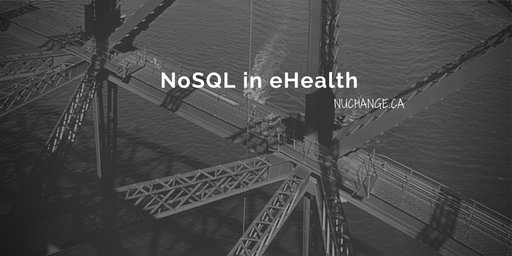NoSQL in eHealth
In Part I of interoperability, I touched upon federated and centralized models and RDF and NoSQL paradigms for data persistence in centralized models. So what exactly is NoSQL in eHealth? NoSQL or ‘Not Only SQL’, unlike the structured tabular data storage method of relational database, use data storage methods such as key-value, graph, or document.
If you, like me, were first introduced to the world of EHRs through open source products such as McMaster’s OSCAR or WHO’s OpenMRS, it would be difficult to think beyond a relational database system with the household names of Oracle, SQL Server and MySQL. As we discussed before, structured relational database systems are not suitable for clinical workflows. This has led to the rejection of most EHR systems by the clinicians.
The fact of the matter is, a large number of legacy EHR systems, including the trusted VistaA EMR by The US Dept of Veterans’ Affairs’ (VA) use a database system unfamiliar to the new generation but nevertheless amenable to clinical workflows called Mumps (often abbreviated as just M). Mumps historically had all the versatilities of modern NoSQL databases that are gradually coming to the forefront such as mongoDB. Rob Tweed, the Director and co-founder of M/Gateway Developments Ltd attempts a reincarnation of M by introducing a javascript/Nodejs based connector called EWD.js
Whether EWD.js succeeds in reigniting interest in M, or the new generation NoSQL databases make their inevitable foray into eHealth, it is high time for a major overhaul in the existing EHR data models.
Related articles
- MongoDB Update Addresses User Criticism (datacenterknowledge.com)
- Modern SQL in PostgreSQL [and other databases] (Use-The-Index-Luke.com)
- NoSQL – Creating Waves In The Database Community (spec-india.com)
